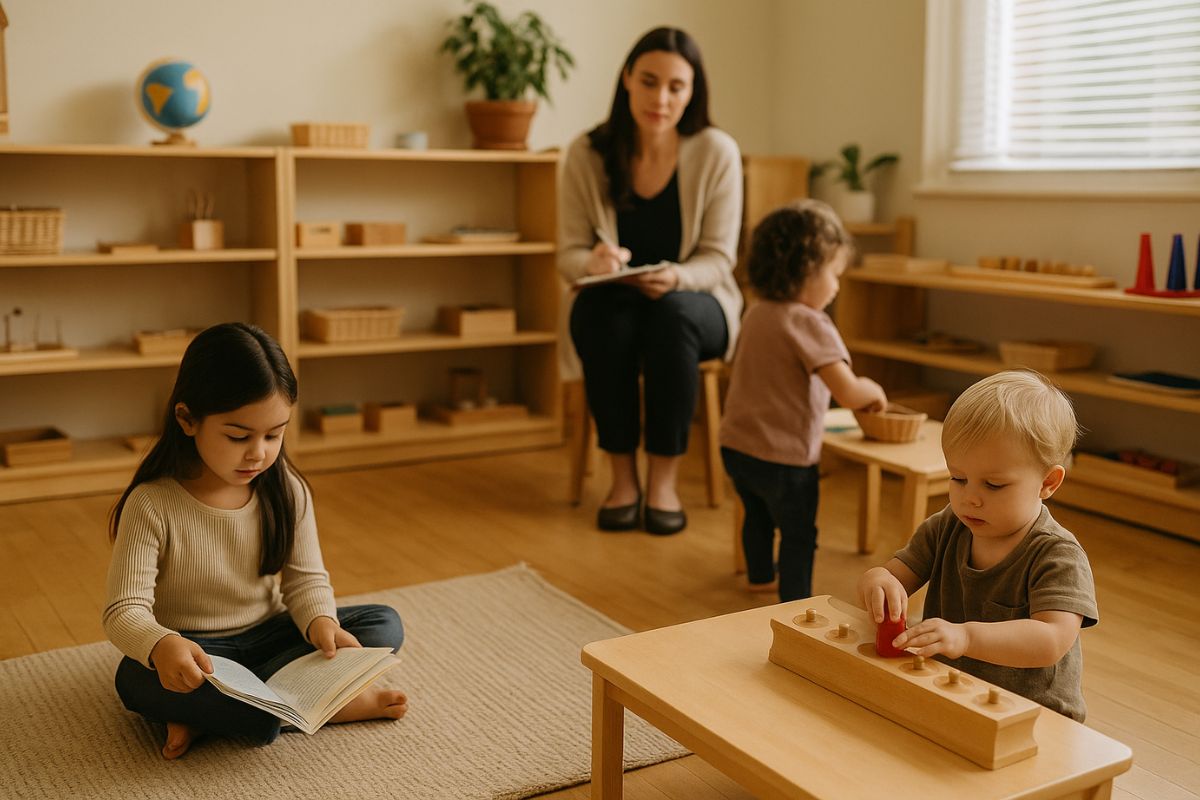Every Montessori classroom offers a peaceful, prepared environment where children can grow in their own time. But behind this quiet rhythm is a careful, intentional practice—observation. It’s one of the most powerful tools a Montessori guide uses, yet it often goes unseen by those unfamiliar with the approach. For children to thrive, the adult must first watch, listen, and understand.
In Montessori settings, observation isn’t passive. It’s a focused act of respect. The adult steps back, not out of neglect, but to let each child show who they are, what they need, and how they learn best. This practice helps build trust, patience, and deep insight into the developmental journey.
Why Observation Matters in Montessori
Observation forms the foundation of decision-making in a Montessori classroom. Guides don’t guess what materials to present or when to intervene. They watch carefully, allowing each child’s behavior to reveal readiness, interest, or frustration. By slowing down and noticing details, guides support learning without interrupting it.
Unlike traditional classrooms where adult-led instruction is central, Montessori classrooms ask adults to be attuned listeners. They look for subtle cues—how long a child engages with a task, how they respond to success or difficulty, and how they interact with peers. These signs shape the guide’s next steps.
What Guides Are Watching For
In practice, observation can take many forms. A guide might notice how a child repeats a work independently or how their focus grows over time. They may write down patterns—who prefers practical life activities, who gravitates toward math materials, who seems withdrawn. These notes help build a full picture of a child’s progress, interests, and emotional needs.
Beyond academic development, guides also observe social behaviors. How a child joins group work, shares materials, or manages conflict becomes just as important as mastering letters or numbers. These observations support a balanced view of growth—one that values independence and cooperation equally.
Tools and Habits of Thoughtful Observation
Montessori educators often keep journals, checklists, or digital tools to record what they see. But even more important than the format is the mindset. A good observer resists the urge to rush in or judge. They remain open, calm, and curious, allowing each child’s unique process to unfold without pressure.
Developing this habit takes practice. New guides may find it hard at first to sit still, say less, and simply watch. Over time, though, this practice deepens. Guides learn that moments of quiet are often when the most learning happens. A child stringing beads with intense focus doesn’t need praise—they need space.
Responding Based on What Is Seen
Observation is only useful if it leads to thoughtful action. In Montessori, that might mean changing the layout of a shelf, adjusting the sequence of lessons, or offering new materials that meet a child’s growing interest. It might also mean stepping back further or having a gentle conversation about emotional challenges.
Importantly, responses are never one-size-fits-all. Two children may both struggle with a task, but for different reasons. One may need more time, another may benefit from peer support. It’s only through careful observation that a guide can tell the difference.
Observation as a Form of Respect
One of the most beautiful aspects of Montessori education is how deeply it honors each child’s dignity. Observation reflects that value. When an adult watches attentively without interrupting, they say with their presence: I see you. I believe in your ability. I trust your process.
This silent support builds confidence. Children feel seen, not scrutinized. They grow into learners who are self-aware and self-driven. The adult is a steady presence, always there, always watching, but never controlling.
Challenges and Growth for the Observer
Even experienced Montessori guides face challenges with observation. Some days are busy, with constant requests or disruptions. At times, personal bias or expectation can cloud judgment. That’s why observation also calls for reflection—on what was seen, how it was interpreted, and what might be influencing perception.
Ongoing professional development, peer observation, and feedback all help improve this skill. But the most important growth often happens through daily practice. By observing again and again, the adult becomes more grounded, more present, and more in tune with the classroom’s needs.
Supporting Families Through Observation
This practice doesn’t stop at the classroom door. Montessori educators can share their observations with families, offering real stories that show progress and personality. Instead of just reporting scores or milestones, they describe how a child concentrates, problem-solves, or helps others.
These observations make parent meetings more meaningful. They create shared understanding, invite conversation, and encourage caregivers to notice similar patterns at home. Observation becomes a bridge, connecting school and family through shared care for the child.
A Culture of Mindful Presence
At its core, observation in Montessori is about presence. It teaches adults to slow down, notice the small things, and trust the unfolding process of growth. In classrooms filled with movement and discovery, the quiet observer helps hold space for each child to rise.
Montessori guides learn to see not just what a child is doing, but who they are becoming. They tune into potential rather than performance. And through this lens, they help shape environments where learning feels natural, safe, and full of purpose.
Conclusion-Free Closing
Observation isn’t flashy. It doesn’t draw attention or ask for praise. But in Montessori classrooms, it carries the weight of wisdom. By watching with care and acting with intention, guides become steady companions on the child’s path—supporting growth not through control, but through trust.
